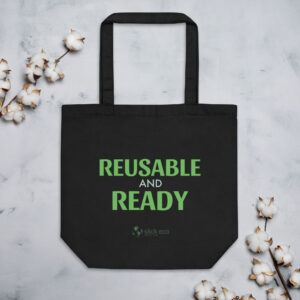Welcome, dear readers, to the world of sustainable shopping! The practice of making conscious, eco-friendly decisions in our shopping habits is becoming increasingly popular, and for good reason – its benefits for our planet and our wallet are undeniable.
But how does sustainable shopping really work? What are its pros and cons? In this article, I will be exploring the world of sustainable shopping and examining its numerous benefits and drawbacks.
First, let’s take a look at the positive aspects of sustainable shopping. For starters, it can drastically reduce your environmental footprint. By shopping for locally-sourced, organic, and reusable items, you’re helping to preserve the planet and reduce the amount of energy and resources that go into producing packaging, and shipping products. This can also help to minimize pollution and waste, as well as benefit the local economy.
Additionally, sustainable shopping can help you save money. By investing in quality products that are made to last, you can avoid spending money on cheap items that need to be replaced regularly. And, by shopping for second-hand items, you can save even more money.
However, there are also drawbacks to sustainable shopping. For example, it can be difficult to find sustainable products, as they aren’t always widely available. Additionally, they can be more expensive than conventional products, especially if they are made with high-quality materials. Finally, it can be difficult to determine which products are actually sustainable, as labels can be misleading.
So, what do you think? Are the pros of sustainable shopping worth the cons? Read on to find out!
What is Sustainable Shopping?

You may have heard of sustainable shopping, but what is it exactly? Put, sustainable shopping is a way of buying products that helps protect the environment and promotes social well-being. It focuses on finding items that are ethically sourced, supports local communities, are recyclable, and are made with renewable materials.
Here are the top things to consider when sustainable shopping:
-

Fashionably Green and On-The-Go
£16.50 Select options This product has multiple variants. The options may be chosen on the product page -

Reusable and Ready Eco-Friendly Tote Bag
£16.50 Add to cart
- Identify the materials. Look for items that are made from renewable or recycled materials or those that are ethically sourced from suppliers who are committed to sustainability.
- Research the company. Check if the company is transparent about its environmental and social practices. Avoid companies with a history of unethical labor practices or environmental destruction.
- Look for certifications. Look for FSC certification, ensuring the company uses sustainable and renewable resources.
- Choose local. Choosing local businesses and products made in your area helps support your local economy and reduces the environmental impacts of transportation.
- Consider durability. Look for products that are built to last and can be easily repaired or recycled.
Sustainable shopping can have many benefits, such as reducing your carbon footprint and supporting local communities. However, finding sustainable items that meet your needs can also be challenging. To ensure you’re making the most sustainable choices, it’s important to do your research and carefully consider the materials, company, certifications, and durability of products before buying.
Pros and Cons of Sustainable Shopping
Sustainable shopping is an approach to buying products that take into account the environmental, social, and economic impact of the items. This means considering the full lifecycle of the product, from production to disposal, as well as the labor and materials used in the production process. Sustainable shopping also includes buying products that are made from recycled materials or that are locally sourced and produced.
Sustainable shopping aims to reduce the environmental impact of buying and using products. It is a way of ensuring we are mindful of the planet and its resources.
Pros of Sustainable Shopping:
Reduces environmental impact
Sustainable shopping helps reduce the environmental impact of the products you buy. This includes reducing emissions from transportation and production and reducing the amount of waste and energy used in the production process.
Supports ethical labor practices
By buying ethically made products, you are supporting businesses committed to fair labor practices and workers’ rights. This can help ensure that workers in developing countries are paid fair wages and treated humanely.
Supports local economies
Buying locally produced products helps to support local economies and keep money in the community. This can create jobs and help developing countries become self-sufficient.
Cons of Sustainable Shopping:
Can be more expensive
Sustainable products may be more expensive than their non-sustainable counterparts due to the higher cost of production.
Limited availability
Sustainable products may not always be available in stores and may require more effort to find.
Can be difficult to verify
It can be difficult to verify the claims of sustainable products, as many companies use greenwashing to make their products appear more sustainable than they actually are.
Sustainable shopping is an important part of reducing the environmental impact of our purchases, but it can also be more expensive and difficult to find. It is important to do your research and ensure that the products you buy are truly sustainable.
Benefits of Sustainable Shopping

You’ve heard the buzzwords: sustainable, eco-friendly, and green. But what does sustainable shopping actually mean? Well, it means shopping in a way that reduces the impact of our purchases on the environment. And there are plenty of benefits to be had from shopping sustainably. Let’s explore some of them:
- Reduced Packaging Waste: When you shop sustainably, you often have the option of buying products with minimal or no packaging. This means less waste ending up in landfills and an overall reduction in the number of resources needed to make and transport the items.
- Supporting Local Businesses: Sustainable shopping often means buying from local businesses that are committed to the environment. This helps to support your local economy and keeps money in the community.
- Increased Quality: Sustainable products are often made with higher-quality materials, meaning they last longer and require less replacement. So, by shopping sustainably, you’re actually saving yourself money in the long run!
- Improved Health: Sustainably produced products are often organic, meaning they are free from harmful chemicals and toxins. This helps to create a healthier living environment for you and your family.
So, there you have it – some of the benefits of sustainable shopping. It’s a great way to reduce your environmental impact, support local businesses and improve your health. So, what are you waiting for? Start shopping sustainably today!
Challenges of Sustainable Shopping

You’re interested in sustainable shopping and want to make a difference in your lifestyle. However, you may be wondering what the challenges of sustainable shopping are. Read on to find out!
- Cost: Sustainable products can often be more expensive than non-sustainable products. This can be a barrier for many who are looking to make an eco-friendly lifestyle change.
- Availability: Sustainable products are not always widely available, especially in small towns and rural areas. This can make it hard to find the items you need.
- Education: With the rise of greenwashing and misleading labeling, it can be difficult to know which products are truly sustainable. Researching and educating yourself about what makes a product sustainable is key to making the right choices.
Sustainable shopping doesn’t have to be daunting. With a bit of research and understanding, you can make informed decisions that will help you lead a more eco-friendly lifestyle.
Strategies to Make Sustainable Shopping More Accessible

You, my friend, are a mindful shopper looking for ways to make sustainable shopping more accessible. Here are four strategies to help you on your mission:
- Shop at local farmer’s markets: Buying fresh, locally grown produce from farmer’s markets is a great way to support sustainable agriculture and reduce your carbon footprint. Plus, you’ll be getting delicious, seasonal produce that tastes much better than the stuff from the supermarket.
- Buy items with minimal packaging: Whenever possible, buy items that use minimal packaging, like loose fruits and vegetables. This way, you’ll reduce your waste and help to conserve resources.
- Buy second-hand items: Shopping for second-hand items is a great way to reduce your environmental impact. You can find great deals on clothes, furniture, and more while helping to reduce the number of new items being produced.
- Buy products made from recycled materials: There are lots of products available that are made from recycled materials, like clothing, bags, and other household items. Buying these items helps to keep resources out of landfills and ensures that they are reused in a responsible way.
With these four strategies, you can start to make sustainable shopping more accessible. So, what are you waiting for? Let’s go shopping!
Effects of Sustainable Shopping on the Environment

You, my friend, have decided to embark on a journey of sustainable shopping, and you want to know the effects on the environment. Well, here it is!
- Reduced amount of waste: By buying sustainable products, you are reducing the amount of waste that is generated and sent to landfills. Sustainable shopping means that you choose products that are made from renewable materials and are designed to last.
- More efficient production: Sustainable shopping means that products are made more efficiently, with less energy and resources. This means that production costs are lower, and fewer pollutants are released into the atmosphere.
- Better air quality: Products that are made using sustainable materials and methods are less likely to emit harmful pollutants. This means that air quality is improved, and the risk of respiratory diseases is reduced.
- Reduced carbon footprint: Sustainable shopping means that fewer resources are used, and fewer emissions are released into the atmosphere. This means that the overall carbon footprint is reduced, and the effects of climate change can be mitigated.
- Improved animal welfare: By choosing sustainable products, you are supporting animal welfare. Sustainable products are often made with animal-friendly materials and processes and are not tested on animals.
So, there you have it – the effects of sustainable shopping on the environment. By making sustainable choices, you are making a positive impact on the world around you.
Impact of Sustainable Shopping on Consumers

You have likely heard of sustainable shopping, but have you considered the impact it has on consumers? While the impact may not be immediately obvious, it can have a profound effect on your wallet, the environment, and your lifestyle. Here are the pros and cons of sustainable shopping that you should consider:
- Financial Impact: Sustainable shopping can help you save money in the long run. By purchasing items that are designed to last longer, you can reduce your total spending on replacements and repairs. Additionally, buying eco-friendly products can help you avoid the hidden costs associated with traditional items, such as energy and water usage and toxic chemicals.
- Environmental Impact: Sustainable shopping reduces the amount of waste generated by consumers. By purchasing items with minimal packaging and long lifespans, you can help reduce the number of materials sent to landfills and oceans. In addition, buying eco-friendly products can help reduce your carbon footprint and conserve natural resources.
- Lifestyle Impact: Sustainable shopping can help you lead a healthier, more sustainable lifestyle. By choosing eco-friendly products, you can reduce your exposure to toxins, chemicals, and other pollutants. Additionally, buying locally-sourced items can help you support your community and the local economy.
Overall, sustainable shopping can have a positive impact on your wallet, the environment, and your lifestyle. So next time you go shopping, take a moment to consider the pros and cons of sustainable shopping and make the best decision for yourself and the planet.
The Future of Sustainable Shopping

Sustainable shopping is the way of the future, and the benefits of choosing this path will only continue to grow. As our world becomes more aware of the environmental impacts of our purchasing decisions, the demand for sustainable goods is also on the rise. Here are some of the ways that sustainable shopping is set to shape the future:
- More Eco-Friendly Packaging: Companies are beginning to recognize the need to reduce the amount of packaging they use and are transitioning to more eco-friendly options. This could mean the use of compostable materials or the introduction of reusable packaging.
- Increased Transparency: Customers will have access to more information about the products they buy. This could include the materials used, the energy and water consumption of production, and the sustainability of the supply chain.
- Connected Shopping: Smart technology will enable shoppers to connect directly with the brands they buy from, allowing them to ask questions and get real-time answers. This will help buyers make more informed decisions about the products they purchase.
- Reduced Waste: Sustainable shopping will help reduce the amount of waste created during consumption. Companies are looking at ways to reduce their carbon footprint and create more efficient systems for using resources.
- Sustainable Materials: Sustainable materials will become increasingly popular, with companies looking for alternatives to plastic, such as bamboo and hemp. These materials are more environmentally friendly and often have other advantages, such as durability and comfort.
- Increased Accessibility: Sustainable shopping will become more accessible to everyone. Online stores will make it easier to find sustainable products, and more physical stores will stock sustainable goods.
- Responsible Consumption: Sustainable shopping will encourage responsible consumption. Companies will be looking for ways to increase the longevity of their products, and customers will be encouraged to buy less and to think more carefully about their purchases.
Sustainable shopping is the way of the future, and its benefits will only continue to grow. Making more responsible decisions about our purchases can help reduce our environmental impact and contribute to a brighter future.
Conclusion
As we have seen, sustainable shopping has the potential to benefit both the consumer and the environment. It can save money, reduce waste, and even provide a more meaningful shopping experience for the consumer. However, it is important to remember that sustainable shopping is not a one-size-fits-all solution. It is a complex topic with a variety of pros and cons to consider.
Overall, if you are looking for ways to reduce your environmental impact, sustainable shopping is definitely worth considering. As with any lifestyle change, it is important to weigh up the pros and cons before making a decision that works for you. After all, the goal is to make a positive impact on the environment while still having access to the things you need. So, why not give sustainable shopping a try and make a difference?

